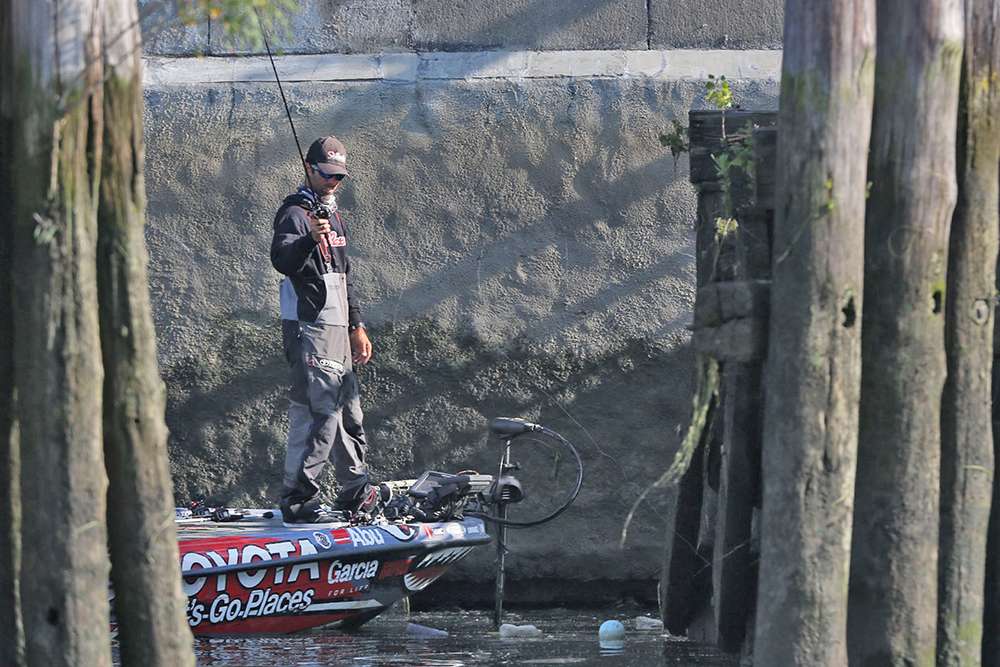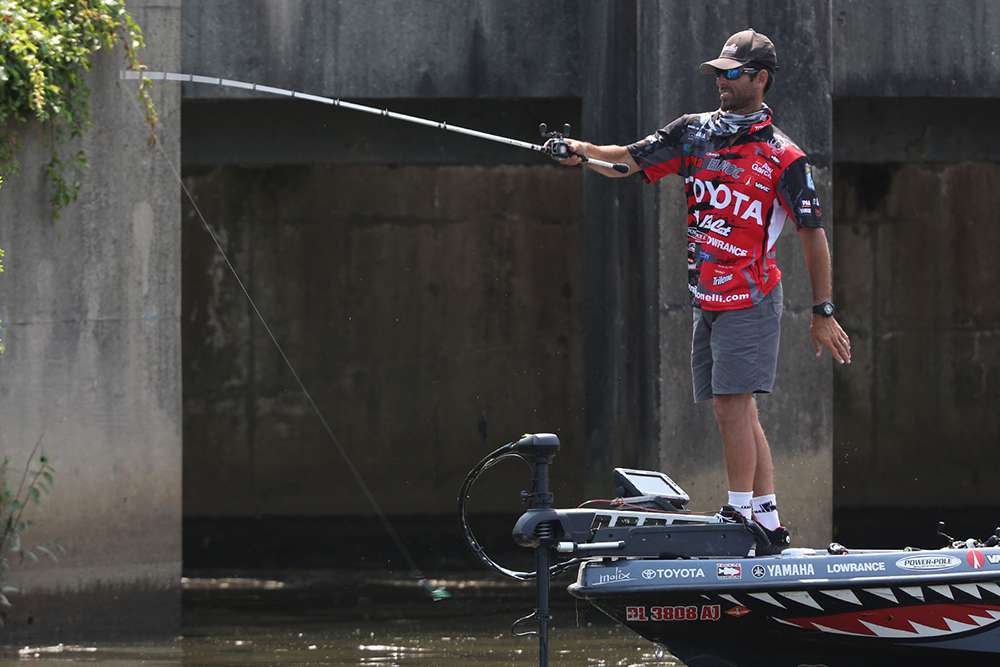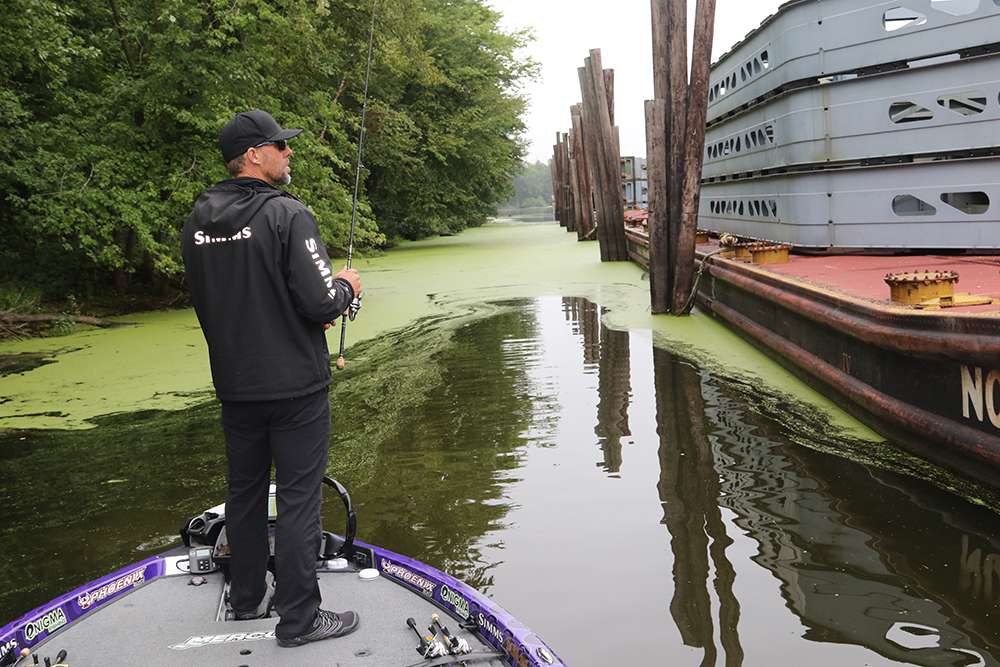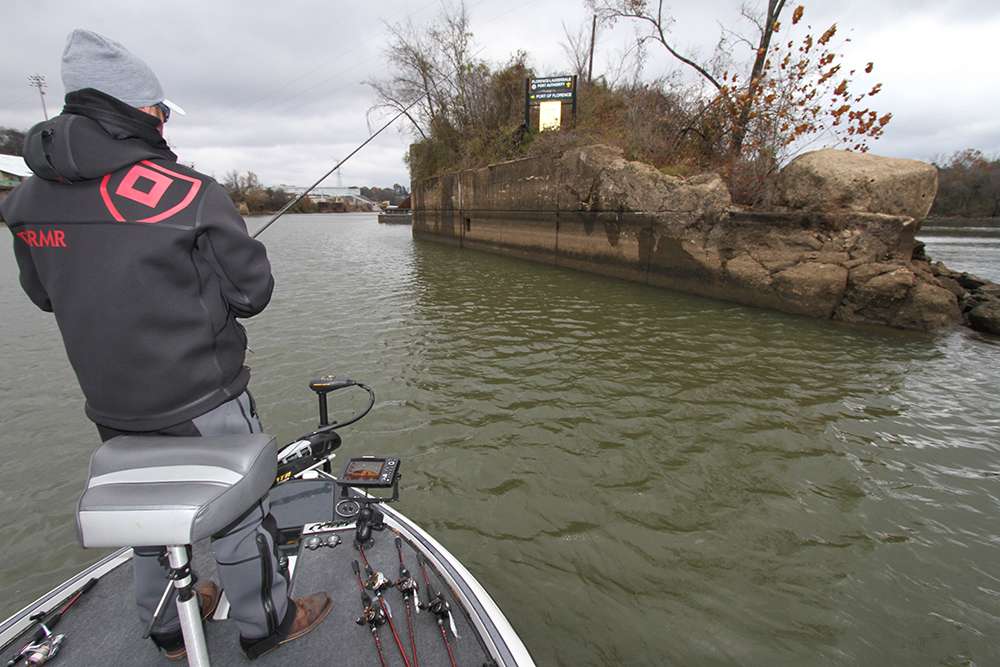
Let’s face it, not everywhere we fish is the 1,000 Islands, Lake Champlain, Havasu or Clear Lake. Sometimes, you’re staring at some pretty dreadful looking scenery while trying to focus on the right cast.
Industrial waterfronts, docked barges, crumbled piers and algae-strewn seawalls – not exactly tourism brochure material. But let’s not be shallow here; even the homely wallflowers deserve a dance or two. You might even find yourself pleasantly surprised with what the most humble of habitats has to offer.
Especially, for the cold-season bass angler, these wallflowers offer attractive traits that can make them the belle of the ball. Heat retention, abrupt depth changes, forage concentration; find these elements and you’ll find bass.
“On a natural lake or reservoir, you have this very traditional natural cover like grass and laydown trees, but in an industrial river — places like Philadelphia, Pittsburgh, the Ohio River, certain parts of the California Delta — you don’t have that,” Elite pro Mike Iaconelli said. “But the fish use the available cover the same way that they’d use natural cover. The little subtleties are what you look for.”
On his Delaware River home waters, Iaconelli favors what he calls “Industrial Squares” — abandoned shipping ports once trafficked by vessels of yesteryear, but now frequented by wintering bass that appreciate the lack of current.
“I’ll circle those areas, and I’m looking for spots that have broken down because I know that the concrete or whatever the wall was made of is in the water below,” he said. “There’s a little pile of rubble, the crawfish are there and that’s where the fish are setting up.”
Pointing to the St. Clair and Detroit Rivers as some of his favorite visually-challenged fisheries, Alton Jones makes a couple of important observations. First, aesthetically pleasing downtown waterfronts, while not necessarily devoid of bass, typically offer less opportunity than industrial areas.
“Cities aren’t in the water, the industrial stuff is in the water,” Jones said. “The industrial areas are ugly, but they offer better fishing because of all the seawalls, barge tie-ups and pipes coming into the water. The good thing is what’s below the surface generally is a continuation of what’s above the surface, so there’s no guessing.”

Top targets
As with natural habitat, selective targeting tends to prove most time effective. Look for these:
Docks, piers and walkways — Any structure built for the loading/unloading process also shade a bass’ eyes, while holding heat for those chilly times.
Vessels — Cargo ships and transport/construction barges may remain moored for days or weeks at a time; plenty of opportunity for forage to gather and bass to find it. Also note that large propellors dig wash holes that bass often utilize, so scan the area thoroughly.
Mats — If you’re thinking hyacinth, pennywort or matted hydrilla, scrub that image and picture a random hodgepodge of logs, limbs, plastic bottles and flotsam of varied assortment. Not as visually pleasing as natural mats, but the same principles of shade, shelter and ambush feeding that attract bass to weed mats work here, too.
“I cannot tell you how many times I’ve caught big ones under ‘trash mats’ that build up in the corners of these industrial areas,” Iaconelli said. “They might build up because of wind, wave action or current; but you use the same technique — a heavy weight to punch through that mat and catch the biggest fish of the day.”
Wrecks — Navigational errors, weather events and intentional scuttling have retired many barges and other vessels along the nation’s industrial shorelines. And, like wine, the opportunity becomes sweeter with time.
“Over the years, most of these barges have hollowed out,” Iaconelli continued. “They’re not just a rectangle with four sides; the fish will use the entire cover inside and out. There’s always a ton of life there — same as an ocean wreck. It’s something you may view as an eyesore, but it’s a habitat paradise.
“I once caught seven keepers from inside a barge on a day when it was hard to get seven bites. A lot of people when up to the barge, fished the sides and left. But I kept letting my bait fall down into the rusted out holes in the barge.

Something different
Now, these ugly industrial areas may seem foreign to traditional bass settings, but Iaconelli reads from the same playbook.
“The main thing to remember is that, just like in a natural lake, fish like areas of change; whether that’s winter, spring, summer or fall,” Iaconelli said. “They’ll move around and use different depth zones throughout the year, so it’s not like in an industrial setting, you’re forgetting what you learned in a natural setting.”
Examples:
- You fish down a row of straight pilings and you find a crooked one bending to the side. Give the spot lots of love.
- A broad mud flat sprouts a lone shopping cart — money.
- You’re working a row of 20 bridge pilings and only one has fallen concrete; the fish are there.
“Fish always gravitate to areas of change,” Iaconelli said. “Winter, spring, summer, fall, these areas have the maximum number of fish.”
Jones said he’ll fish industrial scenarios with the same mix of target- and seasonally-appropriate baits he’s use around natural habitat — a suspending jerkbait, topwater plug, dropshot with a Yum Finesse worm and a Yum flipping tube — the latter Texas rigged on a wide gap hook to prevent the snagging doomed to bare-hook bottom baits.
Iaconelli’s strategy: Work perimeters with a spinnerbait or a Molix Lover vibrating jig for aggressive fish, flip a Texas-rigged Berkley Havoc Pit Boss and then clean up with a soft stick bait on a VMC Neko hook.

Concerns and considerations
As Jones notes, the rose of ugly habitat fishing has a few thorns.
“In those industrial areas where there’s a lot of current, you can get into trouble quick, so you have to stay on the trolling motor and really pay attention,” he said. “You have to watch out for low walkways because your boat can’t fit under them, but the current can try to pull you under. Industrial waterfronts with heavy current are not places for beginners.”
Also, Jones says, metal and concrete surfaces, along with mussels and barnacles (in tidal waters) remain constant break-off threats. In some cases, he’s has found the smells from various industrial plants absolutely nose-bending.
“Getting downwind of that Purina plant on Wheeler Lake will get your attention,” he lamented. “It’ll challenge your breakfast too. The only thing you can do is wear a neck gaiter or pull your shirt collar over your face.
And just like a big, gnarly laydown, industrial habitat can make it tough to boat a fish. Sufficient tackle strength is key, but referencing his barge bonanza, Iaconelli stresses forethought.
“Every time I dropped into that barge, I was thinking ‘How am I gong to get this fish out?’” he said. “You’re thinking about your angles before you make the presentation.”
Of course, you gotta hook ‘em before you can catch ‘em; and some of the most unsightly of habitats may offer some of the best opportunities to do so.





